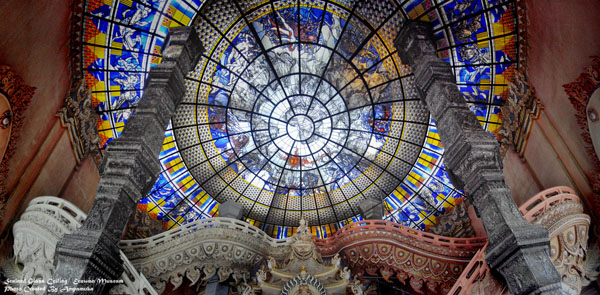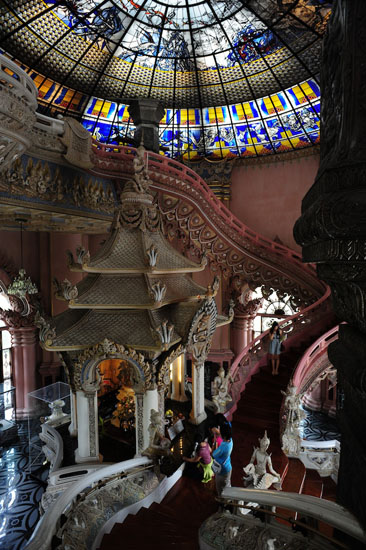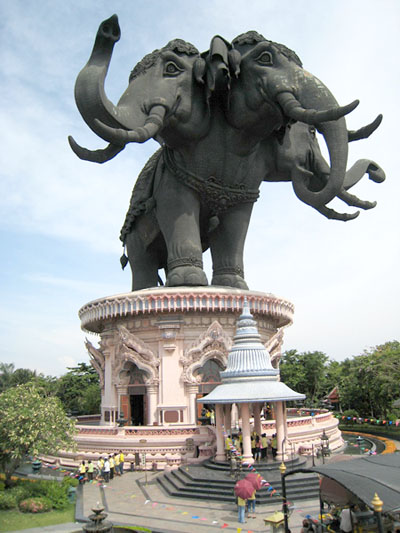September 29, 2009
Squares of Somerville
Posted on YouTube today (though not embeddable) - Ball and Magoun Squares, Somerville from the local TV news magazine, Chronicle, in the Boston area. The piece includes a mini portrait of the Dan Maher Stained Glass studio, in Magoun Square.
The video as a whole is only 3 and half minutes long. Dan is in there from 1:45 to about 3:15. Some little highlights - At 2:10 you see a glimpse of his making one of his Houseware Graveyard pieces. You can see the chunky pieces wrapped in lead came being assembled on the table. At 2:40, the two people in the photo-sandblasted piece are Nancy and Joe Barnes. And finally, note in the long shot of his front window, at the bottom are some of his hand blown rondels. Very nice.
I lived in Somerville for nearly 6 of the 18 years I lived in the Boston area, and Somerville really is a great place for small city squares like this.
September 27, 2009
LIFE on Google Books
Boy, could I waste a lot of time here....
As of last Wednesday every issue of LIFE magazine from 1936 to 1970, almost 1900 issues, is available to read on Google Books. I've commented on the Google LIFE Photo Archive before. This is similar, only the full magazine stories give a much better historical context. Seeing that LIFE was big (almost 11" x 14"), LIFE on Google books has an especially clunky interface to look through, but the sheerly amazing content makes it worth the slog. I spent part of a day searching for stained glass related stories.
A quick look, but some curious finds, below the fold...
April 3, 1939 -
Stained Glass has U.S. Renaissance, focusing on the Wilbur Herbert Burnham Studio, out of Boston. This issue came out just a few months before war broke out in Europe. In this context the weird society photo of Hermann Göring and the long profile of Charles Lindbergh in his "America First" days, seem especially curious.
September 11, 1939 -
Art in Wartime, a brief piece with 2 images about the removal of stained glass from Canterbury Cathedral. This issue is an especially interesting one historically, seeing tha it was published just 10 days after the second world war was declared in Europe. Interesting and kind of creepy, seeing how many of the stories come off as pro-Germany, or pro-Fascist. Mussolini is on the cover, and there is a lengthy, and relatively positive, close-up profile of Hermann Göring, Hitler's second in command. There is also a mention of the American "Nationalists", who advocated that America take the side of Germany rather than England or France. Kind of frightening, actually.
April 6, 1942 -
A Dutch Artist Designs Windows for U.S. Church, about the work of Joep Nicholas. Features some nice color photos. This article shows how the mix of ads and photos could be a bit jarring in some issues of LIFE, as you scroll down from images of stained glass windows depicting "Palm Sunday" and "The Last Supper", then down to "The Crucifixion" and "The Resurrection", only to go directly into a glamour photo showing "Life's Sweetest Moment, with Palmolive Beauty Oil Soap". Some things words cannot describe...
March 20, 1950 -
An issue with a feature about 19 Young Americans, which is about 19 American artists under the age of 40. None of whom, I must add, I'd ever heard of before, with the exception of Sigfried Reinhardt, who eventually would design stained glass windows from his home in St. Louis, Missouri.
March 24, 1952 -
Reinhardt was featured again in LIFE two years later, in a piece called Young Painter's Progress.
June 19, 1950 -
More modern stained glass in LIFE, this time about The Assy Church - Famous Modern Artists Decorate Chapel in Alps. Features some nice color photos, including one of a Rouault window translated by Paul Bony.
May 10, 1954 -
From a special issue called Germany - A Giant Awakened (what's with the German obsession?) there is a picture of Georg Meistermann as part of a feature called Outburst of Art - Post-War Art in Western Germany.
October 25, 1954 -
An article called A Left Bank in New York, about French artists immigrating to New York, including stianed glass artist Robert Pinart. Again, I can't say I've heard of any of the other artists.
Granted that this is ust a quick search, but it is odd, all in all, that after WWII, there is so little about American stained glass.
September 26, 2009
Euronews on Stained Glass Conservation at Cologne Cathedral
A video posted today by Euronews, centered around the conservation of stained glass at Cologne Cathedral.
At the risk of sounding like an aging curmudgeon, I'd say there is a bit of an overemphasis on the technological marvels of scientific tools and procedures. Call it "CSI: Stained Glass Unit". It makes for great TV images, but most stained glass conservation, even on great landmarks, is much more low tech and mundane.
There is a website given at the end for Constglass, which is supposed to be an acronym for "Conservation Materials for Stained Glass Windows - Assessment of Treatments, Studies on Reversibility, and Performance of Innovative Restoration Strategies and Products". What there is seems fine by me in terms of good sound conservation practices, though it is hard to tell, what with the cryptic lingo used throughout the site, as in this page called Project Methodology.
September 19, 2009
Transforming to halftone screens in Photoshop
I've posted a new video on YouTube. It's my first attempt at screencasting, which is when you record video of what you are doing on the computer screen, basically video screen capture. The video is sort of a prequel to my Thermal screenprinting post from last year.
This is the photo that is transformed. That's my Gwyneth at age 1.

This is the image as transformed to greyscale and then to various halftone screens. I first started doing this kind of transforming to halftone screen from almost the first time I used Photoshop some 17 years ago.
Click on the image for a more high resolution image to pop up.

and here is the video itself -
September 16, 2009
John LaFarge at Vareika Gallery
An article called Newport art gallery features stained-glass windows of John La Farge from the Providence Journal website. The gallery in question is William Vareika Fine Arts, Inc., of Newport, Rhode Island.
I would highly recommend you scroll down on their website and download the exhibition catalog as a pdf - 40 pages and 78 full color photos. Specifically, photos of all the stained glass on display plus dozens of LaFarge watercolors, many of them designs for stained glass. Wonderful.
I visited the Vareika gallery once, about 12 years ago, to see the LaFarge watercolor sketches for stained glass. They didn't have any stained glass panels on display back then, so this would definitely be worth a special trip.
[update - later the same day...] Funny. After I did this initial post, this video showed up on YouTube, via Salve Regina's YouTube channel - La Farge Window Restoration-Our Lady of Mercy Chapel
September 15, 2009
Erawan Museum, Thailand
I'd heard of this building a few months ago, but the website at the time was pretty weak and I couldn't find images or info that justified a blog post. Amazing how things change in a few months.
The Erawan Museum, near Bangkok, Thailand, is a truly unique contemporary building, and stained glass does figure in as a prominent feature.

Go look at the full and amazing hiresolution shots by flickrite AmpamukA
A shot seeing more of the interior with the glass -

via flickrite weeviraporn, who also has a nice flickr set on the Erawan Museum.
A detail showing the figural style of the stained glass. The details throughout the building look incredible.

I must admit that I'm not sure that the loose figural style really fits in with the rest of the building, in my opinion. The windows were designed by the late German artist Jakob Schwarzkopf (1926-2001), who was 73 when he got the commission.
Now, the big question, if you haven't already gone to look - what kind of building is this contained in?
A giant three-headed elephant building, of course. I don't quite know how it's done, but the big bronze elephant is basically standing on the stained glass dome.

via flickrite binder.donedat
The official Erawan Museum website gives a good amount of the back story. There is also an article in ThaiAsiaToday called Heavan's Above! that's gives further detail.
[update April 4, 2011 - new link re: Erawan Museum - PanoramicViews of Erawan Museum]
September 12, 2009
euromaxx highlights - Peters Studio, Germany
The show as a whole is a bit too TV-slick for my taste, but there is a segment toward the end about Peters Studios, a large multi-generational stained glass studio in Germany. The part about Peters is from 18:50 to 22:30 in the video. Beware, it may play slowly on an older computer.
All in all, a brief but interesting glimpse into a modern German studio.
September 10, 2009
Ponyo, Miyazaki and the Stained Glass of the Studio Ghibli Museum
I saw the new movie 'Ponyo' last weekend with my daughter. We both loved it.
It's a strange and complicated story, based very loosely on The Little Mermaid, about a goldfish who wants to be a human girl. I've dubbed it the "Citizen Kane of Transforming Goldfish movies". The way I see it, the movie is a weird and delightful story about being a very young child. Rarely have I seen any movie capture the mad, exasperating, wonderful and frightening energy of small children before.
Aside from the fact that the director, Hayao Miyazaki, presents an aesthetic that any artist of any medium would appreciate, there is a specific stained glass connection within the world of his studio, Studio Ghibli. It comes through the Studio Ghibli Museum, which is located just west of Tokyo in Japan. Designed by Miyazaki himself, the building features stained glass throughout, depicting characters from Miyazaki films. The translations are only okay, in my opinion, as they are just the characters without the settings, and the linework is neither as precise nor as rich as in the movies. Still, it is nice to see stained glass in the museum at all.
This is a video tour of the Studio Ghibli Museum, giving a good overview of the building itself, but with only glimpses of the stained glass. Japanese, with English subtitles.
One of the stained glass windows in the Studio Ghibli Museum-

via flickrite Jonathan O'Donnell
and a detail showing 2 characters, Chihiro/Sen and Haku (in dragon form), from Spirited Away, one of my 2 favorite Miyazaki films.

Image from Spirited Away from flickrite Archangeli
To demonstrate why the stained glass doesn't quite match the detail or exuberance of the movie, just look at this trailer for Spirited Away. Do a freeze frame right before the end, at 2:26, and compare it to the stained glass.
There are more and better stained glass windows in the museum, but not many high quality photos of them show up on the internet as the museum has a no photography inside policy. Still, there are a good number of decent shots searching for Studio Ghibli stained glass on Flickr. It's where I saw this photo of stained glass, based on my other favorite Miyazaki movie - My Neighbor Totoro.
September 03, 2009
Interesting site indeed
via Jim Miller on the H-Stained-Glass Network email forum, dated September 2, 2009 and named "An Interesting Site".
It is, indeed, an interesting site.
The origin of the site is a bit of a mystery, but the quantity and quality of the images is extremely impressive, especially in terms of doing comparative iconographic scenes. For instance, there are 30 different variations, over 4 web pages, of Jésus bénissant les enfants - Jesus Blessing the children.
One could hope for more information on the makers and sites, but with this many images and in such an interesting structure, who's to complain.
September 02, 2009
Bottle Wall/Door Thing...
as a part of The Recycled Houses, a slideshow from the New York Times.
It shows how
Dan Phillips started Phoenix Commotion, a construction business in his hometown, Huntsville, Tex., where he builds low-income housing out of salvaged items
Look for the nice bottle wall incorporated into the front door - you get 2 views, on slide 4 and an exterior view on slide 11.